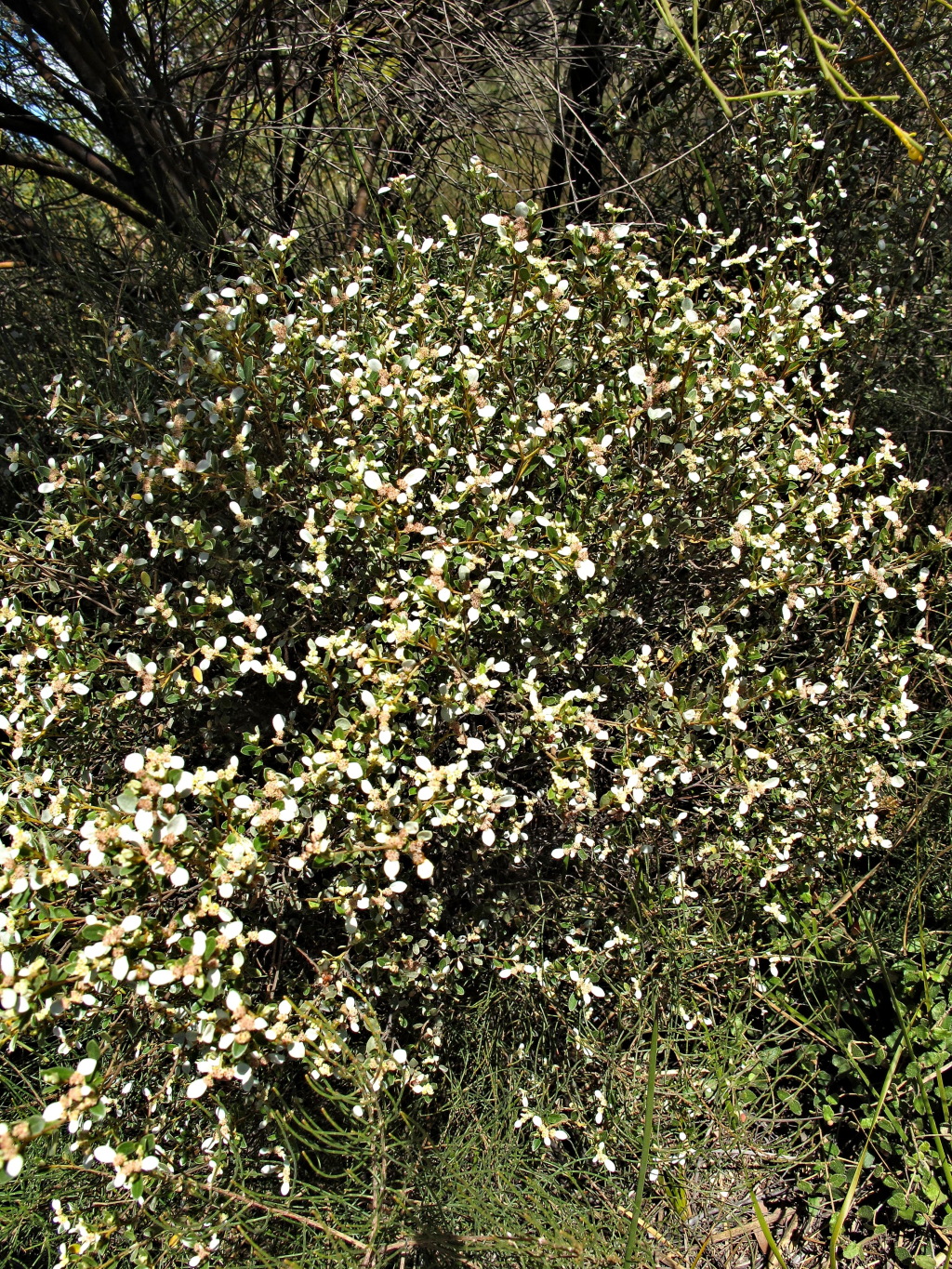Spyridium nitidum
N.A.Wakef. Shining SpyridiumErect, spindly shrub to c. 2 m high; branchlets silky-pubescent. Stem leaves shortly petiolate, narrowly elliptic to narrowly obovate, 4–10 mm long, 2–3.5 mm wide, acute, often slightly recurved, virtually flat, surfaces densely covered by short silky hairs; floral leaves similar but usually broader (to 6 mm) and shortly white-woolly above; stipules brown, 1.5–3 mm long, more or less glabrous, free, but closely overlapped near base, viscid when young. Flowers in terminal, sessile or shortly pedunculate heads, each c. 0.5 cm diam. and subtended by a floral leaf and several broad, pale to brown viscid bracts (these enlarging in fruit), the heads arranged in approximate umbels with the central one sessile; perianth 1.5–2 mm long, white, externally white-woolly; sepals c. 0.8 mm long; free part of hypanthium c. 0.2 mm long; style c. 0.2 mm long, entire. Fruit c. 2 mm long. Flowers Aug.–Oct.
LoM, Wim. Also SA. Extremely rare in Victoria, known by very few collections from mallee developed on heavier soils at the southern fringe of the Big Desert near the South Australian border.
Willis (1973) asserted that the Victorian plants were better placed within the very similar, South Australian species, S. spathulatum, but that species differs in having stem leaves that are more or less glabrous above and have a prominently thickened margin.
Walsh, N.G. (1999). Spyridium. In: Walsh, N.G.; Entwisle, T.J., Flora of Victoria Vol. 4, Cornaceae to Asteraceae, pp. 115–120. Inkata Press, Melbourne.
 Spinning
Spinning
